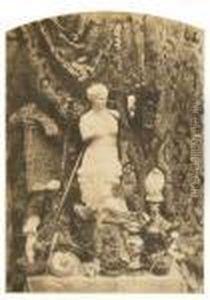Adolphe Bilordeaux Paintings
Adolphe Bilordeaux was a French artist born in 1825, known primarily for his work as a sculptor. Although not as widely recognized as some of his contemporaries, Bilordeaux contributed to the rich tapestry of 19th-century French art, which was characterized by a variety of movements including Romanticism, Realism, and Impressionism.
Trained in the Beaux-Arts tradition, Bilordeaux honed his skills under the tutelage of prominent artists of the time. His works often reflected the academic standards of beauty and skill that dominated the French art scene during the mid-1800s. Bilordeaux's sculptures typically embodied a classical sensibility, with an emphasis on form, proportion, and the idealized human figure, elements that were highly valued in the academic circles.
Throughout his career, Bilordeaux exhibited his works at the Paris Salon, the official art exhibition of the Académie des Beaux-Arts in Paris. The Salon was the premiere event for artists to gain recognition, and Bilordeaux's participation would have been an important aspect of his artistic journey. His sculptures, often made of marble or bronze, would have depicted historical or mythological subjects, in line with the preferences of the Salon juries.
Despite his contributions to the art world during his lifetime, Adolphe Bilordeaux's legacy is not as prominent as some of his peers. The latter half of the 19th century saw dramatic shifts in the art world, with the rise of Impressionism and Post-Impressionism challenging the academic norms that artists like Bilordeaux represented. As a result, the work of academic sculptors often became overshadowed by the more avant-garde approaches of the late 19th and early 20th centuries.
Adolphe Bilordeaux passed away in 1904. While his name may not be immediately recognized among the pantheon of great artists, his work remains a testament to the academic artistic traditions that shaped much of the 19th-century European art world. His sculptures are part of the historical record of French art and contribute to the understanding of the period's aesthetic values and technical proficiency.

